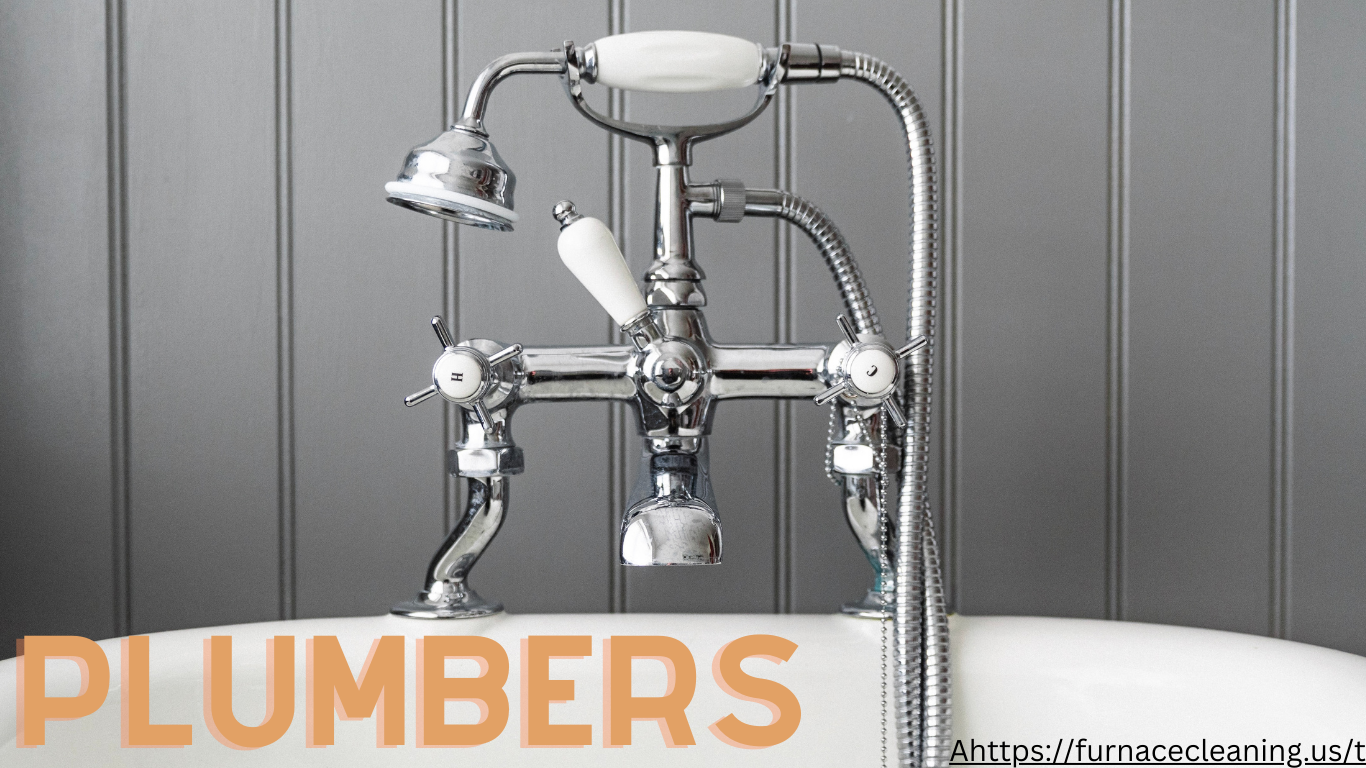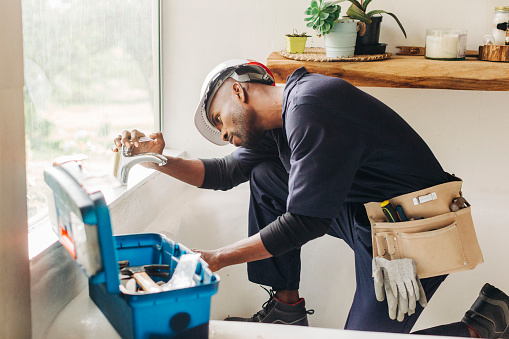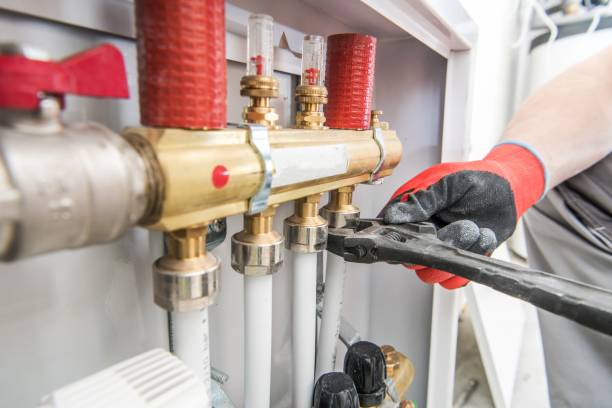
Top 7 Commercial Plumbing Problems
Plumbing Problems
Leaks:
Pipes and fixtures in commercial buildings are under constant use and can develop leaks over time. These leaks can cause damage to the building and waste a significant amount of water.
Leaks in commercial plumbing systems can occur in a variety of places, including pipes, fixtures, and appliances. Some common causes of leaks include:
Age and wear
Over time, pipes and fixtures can become corroded and develop leaks.
Temperature changes
Pipes can expand and contract with changes in temperature, which can cause them to crack or break.
Improper installation
Leaks can occur if pipes or fixtures are not installed correctly.
High water pressure
Excessive water pressure can cause pipes to burst or develop leaks.
Vibrations
Pipes can be damaged by vibrations caused by heavy machinery or other equipment.
Clogs
n the drainage system can cause water to back up and leak out of pipes or fixtures.
Clogs:
Grease, food, and other debris can accumulate in drains and cause clogs, leading to slow drains and sewage backups.
Clogs in commercial plumbing systems can occur in a variety of places, including pipes, drains, and fixtures. Some common causes of clogs include:
Grease and oil
Grease and oil can accumulate in pipes and drains, causing clogs.
Food waste
Food particles can accumulate in pipes and drains, causing clogs.
Hair and soap scum
Hair and soap scum can accumulate in drains, causing clogs.
Foreign objects
Items such as paper, plastic, or other debris can get stuck in pipes and cause clogs.
Tree roots
Tree roots can grow into pipes and cause clogs.
Backflow:
Backflow is a condition where contaminated water flows back into the building’s clean water supply.
It can occur due to a change in water pressure, such as when there is a break in the main water supply line, or when the pressure in the building’s plumbing system becomes lower than the pressure in the public water supply system.
Backflow can also occur if a building’s plumbing system is not properly maintained or if the backflow prevention devices are not working properly.
Backflow can pose a serious health hazard as it can introduce contaminants into the building’s clean water supply.
It’s important for commercial building owners to have backflow prevention devices installed and regularly inspected to prevent backflow from occurring. These devices include:
Reduced Pressure Zone (RPZ) valves
These valves are installed on the main water supply line and prevent backflow by automatically shutting off water flow when backpressure is detected.
Double Check valves
These valves are installed on the main water supply line and prevent backflow by automatically shutting off water flow when backpressure is detected.
Air Gaps
This is the physical separation between the end of the supply pipe and the flood-level rim of the receiving vessel.
Malfunctioning fixtures:
Commercial plumbing fixtures such as toilets, sinks, and urinals are under heavy use and can malfunction, leading to a lack of hot water or low water pressure.
Lack of hot water
This can be caused by problems with the water heater or the thermostat on the hot water tank.
Low water pressure
This can be caused by clogs, leaks, or problems with the water supply.
Leaks
Fixtures such as toilets, sinks, and urinals can develop leaks over time, causing water damage and wasting water.
Overflow
Toilets and sinks can overflow due to clogs or problems with the plumbing system.
Slow drainage
Drains can become clogged, causing water to drain slowly from fixtures.
Old and outdated systems:
Some commercial buildings have outdated plumbing systems that are not up to code and can pose a risk to the building’s occupants.
Inefficiency
Old systems can be less efficient than newer systems, leading to higher water and energy bills.
Lack of safety features
Newer systems may include safety features such as backflow prevention devices, which older systems may not have.
Lack of compliance with current codes
Building codes and regulations change over time, and older systems may not comply with current codes, putting the building’s occupants at risk.
Limited capacity
Old systems may not have the capacity to handle the water usage needs of a modern commercial building.
Difficulty finding replacement parts
As systems age, it can become increasingly difficult to find replacement parts, making repairs more difficult and costly.
Frozen pipes during winter:
Frozen pipes can occur during cold weather and can cause significant damage to a commercial building’s plumbing system. When the water in pipes freezes, it expands and can cause the pipes to burst, resulting in leaks and flooding. Some common causes of frozen pipes include:
Insufficient insulation
Pipes that are not properly insulated are more susceptible to freezing, particularly if they are located in unheated areas of the building such as crawl spaces or attics.
Cold drafts
Pipes can freeze if they are located near cold drafts, such as windows or doors that are not properly sealed.
Low indoor temperature
Pipes can freeze if the indoor temperature of the building is too low.
Improperly drained outdoor plumbing
Outdoor faucets and pipes can freeze if they are not drained properly before cold weather sets in.
To prevent pipes from freezing, commercial building owners can take the following steps:
Insulate pipes
Insulating pipes can help keep them warm and prevent freezing.
Seal drafts
Sealing windows and doors can prevent cold drafts from reaching pipes.
Keep the indoor temperature consistent
Keeping the indoor temperature at a consistent level can help prevent pipes from freezing.
Drain outdoor plumbing
Draining outdoor faucets and pipes before cold weather sets in can help prevent freezing.
Monitor temperature
Monitor the temperature of the building, if the temperature drops below freezing point, take necessary actions to prevent freezing.
Low water pressure:
This can be caused by a variety of issues, including clogs, leaks, or problems with the water supply.
Low water pressure can be a problem in commercial plumbing systems and can cause a variety of issues, including:
Difficulty using fixtures
Low water pressure can make it difficult to use fixtures such as faucets, showers, and toilets.
Difficulty running appliances
Low water pressure can make it difficult to run appliances that require a significant amount of water, such as dishwashers and washing machines.
Reduced fire protection
Low water pressure can reduce the effectiveness of fire sprinkler systems.
Inefficiency
Low water pressure can waste water, resulting in higher water bills.
Some common causes of low water pressure include:
Clogs
Clogs in the pipes can restrict the flow of water and cause low pressure.
Leaks
Leaks in the pipes can cause water to be lost, resulting in low pressure.
Corrosion
Corrosion in pipes can cause a reduction in the diameter of the pipe, resulting in low pressure.
Old or outdated pipes
Old or outdated pipes may not have the capacity to handle the water usage needs of a modern commercial building.
Municipal supply issues
Sometimes, low water pressure can be caused by issues with the municipal water supply system.
It’s important to address low water pressure promptly to prevent further issues and wasted water.
Hiring a professional plumber can help identify the source of the problem and make necessary repairs.
Upgrading the plumbing system, if necessary, can help improve the water pressure and overall efficiency of the building
Overflowing toilets:
This can be caused by clogs, leaks, or problems with the plumbing system.
Water damage
Overflowing toilets can cause water damage to the flooring and walls of the building.
Unsanitary conditions
Overflowing toilets can create unsanitary conditions and potential health hazards.
Inconvenience
Overflowing toilets can disrupt the normal operation of the building and cause inconvenience to the building’s occupants.
Some common causes of overflowing toilets include:
Improperly adjusted float
The float inside the toilet tank that regulates the water level can become misadjusted and cause the toilet to overflow.
Worn flush valve
The flush valve that controls the flow of water from the tank to the bowl can become worn and cause the toilet to overflow.
Overuse
Overuse of the toilet, especially in commercial buildings with high foot traffic, can cause it to overflow.
It’s important to address overflowing toilets promptly to prevent further issues and unsanitary conditions. Hiring a professional plumber can help identify the source of the problem and make necessary repairs. Regular maintenance and cleaning of the toilets can also help prevent overflowing from occurring.
Water damage
Sewer backups can cause water damage to the building, including contaminated water.
Unsanitary conditions
Sewer backups can create unsanitary conditions and potential health hazards.
Odors
Sewer backups can create unpleasant odors.
Property damage
Sewer backups can damage the property and create hazards.
Water heater problems:
Commercial water heaters can malfunction and require repairs or replacement.
Lack of hot water
This can be caused by problems with the water heater or the thermostat on the hot water tank.
Leaks
Water heaters can develop leaks over time, causing water damage and wasting water.
Strange noises
The water heater can make strange noises such as rumbling or whistling, indicating a problem.
Rust-colored water
If the water coming out of the taps is rust-colored, it can indicate a problem with the water heater.
Inefficiency
An old or malfunctioning water heater can be less efficient than a new one, leading to higher energy bills.
Some common causes of water heater problems include:
Age
Over time, water heaters can become corroded and develop leaks or other problems.
Lack of maintenance
A lack of regular maintenance can cause a water heater to malfunction or break down.
Hard water
Hard water can cause mineral buildup in the tank, reducing the efficiency of the water heater and shortening its lifespan.
Thermostat issues
The thermostat on the water heater can malfunction, causing the water to be too hot or not hot enough.
Solution Commercial Plumbing Problems
The solutions for commercial plumbing issues will vary depending on the specific problem, however, some general steps that can be taken to address and prevent commercial plumbing issues include:
Regular maintenance and inspection
Scheduling regular maintenance and inspection of the plumbing system can help catch and fix problems before they become major issues.
Hiring a professional plumber
Hiring a professional plumber can help identify the source of the problem and make necessary repairs.
Upgrading or replacing old or outdated systems
Upgrading or replacing old or outdated systems can improve the efficiency, safety, and compliance of the building.
Insulating pipes
Insulating pipes can help keep them warm and prevent freezing.
Seal drafts
Sealing windows and doors can prevent cold drafts from reaching pipes.
Keep the indoor temperature consistent
Keeping the indoor temperature at a consistent level can help prevent pipes from freezing.
Drain outdoor plumbing
Draining outdoor faucets and pipes before cold weather sets in can help prevent freezing.
Regular cleaning and maintenance of fixtures
This can include cleaning out drains, checking for leaks, and ensuring that fixtures are functioning properly.
Monitoring temperature
Monitoring the temperature of the building, if the temperature drops below freezing point, take necessary actions to prevent freezing.
Preventing clogs
Regular maintenance and cleaning of the plumbing system can help prevent clogs from forming.






